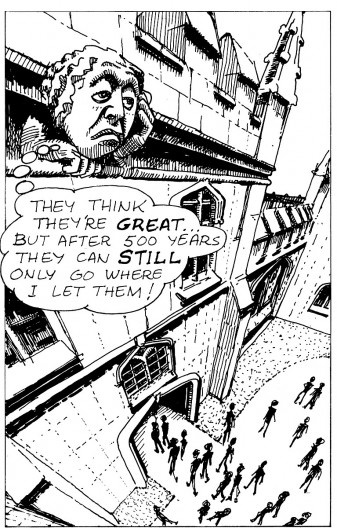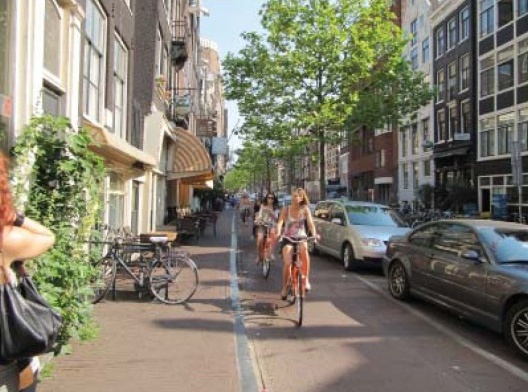
Physical structure as a political system
BENTLEY et al., 1985, p.9
Paula Barros: At present half of the world”s population is living in urban areas and, not surprisingly, concerns about how to design urban areas have possibly never been greater. Marshall points out that “cities are the ultimate human-made habitats, and yet – among all species – it is perhaps only humans who create habitats that are not fit to live in” (10). How may city form contribute towards the enhancement of the quality of urban life in the contemporary scene?
Ian Bentley: Once in place, the physical structures of settlements – as distinct from how they are produced and managed – make some actions easier for their inhabitants, and others more difficult. You can walk through a door, but not through a wall – as Michel Foucault once put it “a wall says NO, louder than any voice you will ever hear”. This means that the physical structure of any settlement is effectively a political system and, in my opinion, should be designed to open up opportunities in as many people”s lives as possible, with the minimum need for external resources – money, motorcars, energy and so forth. That is what the qualities advocated in RE are about. That is also why, in my opinion, they are highly relevant in fast-developing economies; where social and economic inequality is often quite high.
PB: Urban design has been considered a key tool in transforming vehicle-dominated urban settlements into healthier ones. What are the key urban design qualities which may facilitate walking and cycling as an integral part of daily life?
IB: In the UK at least, there is currently quite a debate about how best to promote cycling, and I”m not a cyclist myself, so let me concentrate on the walking experience. I walk a lot. I want a well-connected street system that offers me a choice of routes that I can take from A to B, and makes it likely that I shall encounter other people along the way. I want to feel safe, so I value the surveillance and signs of life that that come from active fronts of the buildings that border the streets. I want an aesthetically interesting experience, so I also value the visual richness that flows from these signs of life, as well as the songs of birds in street trees, and the occasional scent and the buzzing of bees from plants in front gardens and balconies. In the summer I want the shade and shelter from rain that the street trees offer, but in winter I want the leaves to fall off to let the sun in, but still keep the winds at bay. This is not rocket science.

Active fronts tend to trigger a sense of protection against crime and violence
Photo by Nicole Strong
PB: Studies which discuss the relationships between spatial structure and crime have the potential to inform coding systems in Brazil, a country where fenced parks, shopping centers, business parks and gated residential developments have been illusorily perceived as able to provide protection against crime and violence. What types of alternative spatial morphologies may be able to trigger a feeling of security while contributing towards the generation of a lively public realm?
IB: I think the creation of highly-connected street systems with high levels of pedestrian flow, and “active interfaces” between buildings and streets, with as many doors and windows as possible overlooking the public realm, will help. But space is not the only variable here, and better-off people all over the world do seem to be withdrawing from the public realm. I agree with you that the “gated community” syndrome only creates an illusory perception of safety, and will eventually be recognized as a failed experiment. If this is right, there is a clear UD implication: we have to design these places, if we are forced to do so in particular situations, so that they are easy to join up spatially in the future. In other words, I think we should design “joined up” places that just happen to be dissected by walls in the short run.
note
10
MARSHALL, Stephen. Cities, Design & Evolution. London: Routledge, 2009, p. 1.



